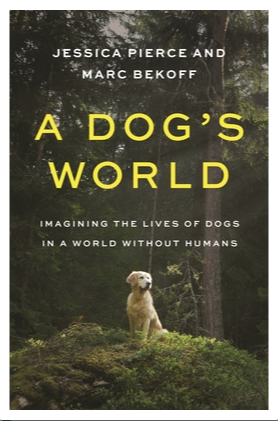Anxiety
How Would Dogs Fare in a World Without Humans?
A new book challenges assumptions regarding how much dogs need us.
Posted December 27, 2021 Reviewed by Tyler Woods
Key points
- A Dog's World contemplates how dogs might fare without humans, challenging existing assumptions about who and what dogs are.
- Dogs need us less than we think, but we should pay more attention to understanding their needs.

One of the merits of A Dog’s World by Jessica Pierce and Marc Bekoff—both long-time bloggers for Psychology Today—is the way the authors manage, in looking at what might become of dogs were humans to disappear from the planet, to present a powerful critique of our treatment of our putative best friends. Their book is an extended thought experiment that, in addition to detailing a possible future challenges us to, examines the present relationship between dogs and humans. As they point out on several occasions, there is a model for dogs in a world devoid of Homo sapiens, and it is to be found in the lives of free-ranging and feral dogs which make up the majority of the dogs alive today. They write:
In thinking about who dogs might become without us, we may gain fresh insight into who they are now and how our relationships with them can best benefit us both. Looking at what dogs might gain were humans to disappear can help crystallize some ways in which we compromise their Dogness, and greater awareness of this might help us give dogs greater independence and freedom right now (p. 163).
This holiday season, with the pandemic continuing to rage with no end in sight, seems a particularly apt time to examine the issues that Pierce and Bekoff raise. The first year or two of the pandemic witnessed an astonishing increase in the number of dogs being adopted from shelters and the street. Dogs were seen as the best medicine humans could find for dealing with the forced isolation that profoundly altered many of our lives. Yet even as the number of previously unwanted dogs dropped to near zero in some places, animal advocates raised cautionary flags, pointing out that as draconian lockdowns were eased and people began returning to work, the situation in which dogs found themselves might deteriorate. Dogs previously lavished with attention would be left to their own devices and probably feel abandoned.
Indeed, before the present rebound of COVID-19, there were signs that this mass abandonment was underway, as people responding to polls would say that separation anxiety was one of the major behavioral problems they faced with their dogs. Take the case of Ingrid Bock, a member of the Rochester, N.Y. philharmonic, who reported that when the shutdowns eased and she began going out more, her dog Diesel, a Yorkshire terrier mix, suffered. Bock told a reporter for WXXI News, “He would be right on my heels. It was hard to get through a doorway ‘cause he was trying to stick right to me and also he would then bark if I shut the door and was on the other side of it, and he sounded quite frantic. It was really sad.”
Separation anxiety is, of course, a psychological condition, not something easily corrected by behavioral modification. It is also one of the leading reasons people abandon their dogs. Dogs with separation anxiety can act in ways humans find unacceptable that are also resistant to what is usually known as training (“come”, “sit”, “stay”). They may urinate in the house, even on furniture, bark for prolonged periods, scratch at doors. As we move out of the pandemic, we might be witnessing the beginning of a perfect storm in which shelters—which six months ago had no dogs available for adoption—will be flooded with animals. This could be worsened after the holidays, when Americans traditionally abandon pets to shelters, often because that cute dog in the window proves to be a messy, noisy puppy who does not match the individual’s or family’s “lifestyle.”
Pierce and Bekoff observe that many of these perceived problems with dogs and dog behavior arise from our failure to understand their needs—for example, for exercise or for something as simple as giving them time to relieve themselves where they want to during their walks. In learning about how our dogs might fare without us, we are forced to look at how they are doing with us and the answer is: not always very well.
Pierce and Bekoff have given us a wonderfully informative and subtly subversive book that challenges us to examine our own behavior as well as that of our canine companions. People contemplating getting a dog would be wise to read it before rushing to the nearest animal shelter.


